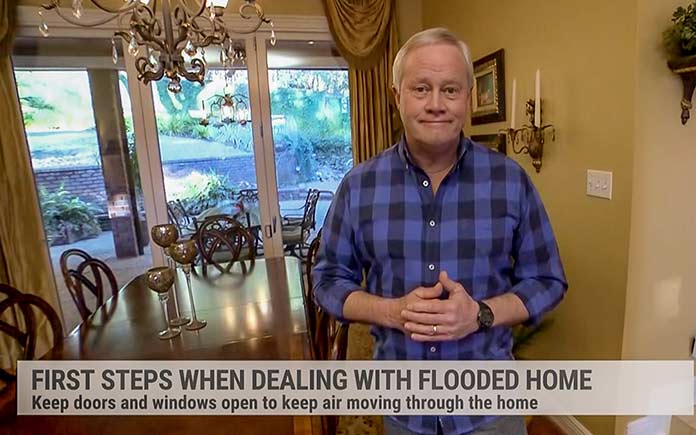
Anytime there’s heavy rain, you should expect the potential for flood damage. A flooded home isn’t just costly; it also can be hazardous, especially when there’s mold present.
Don’t let flooding catch you off guard — keep these pointers in mind to protect you and your home.
If Your House Has Flood Damage…
- Turn off all electrical circuits.
- Remove rugs, upholstered furniture, curtains and any other soft surfaces from the home and get them outdoors to dry out.
- Use fans and dehumidifiers to reduce moisture.
- Keep doors and windows open as much as possible. The goal is to keep air moving through the home.
What You Should Know About Mold
- Mold can begin developing within 24 to 48 hours after a flood damages your home.
- If your home floods, immediately begin the drying out process.
- Toss any porous materials that cannot be cleaned or dried.
- If you have wet drywall and insulation, remove it. Otherwise, mold can grow behind walls.
If You See Mold Growth
- Wear protective gear including protective eyewear, non-porous gloves, a respirator mask, long sleeves, long pants and rubber boots.
- Clean hard surfaces with hot water/bleach, and don’t mix bleach with other cleaners.
- Spray remaining surfaces with an antimicrobial cleaner.
- Give the rooms plenty of ventilation.



